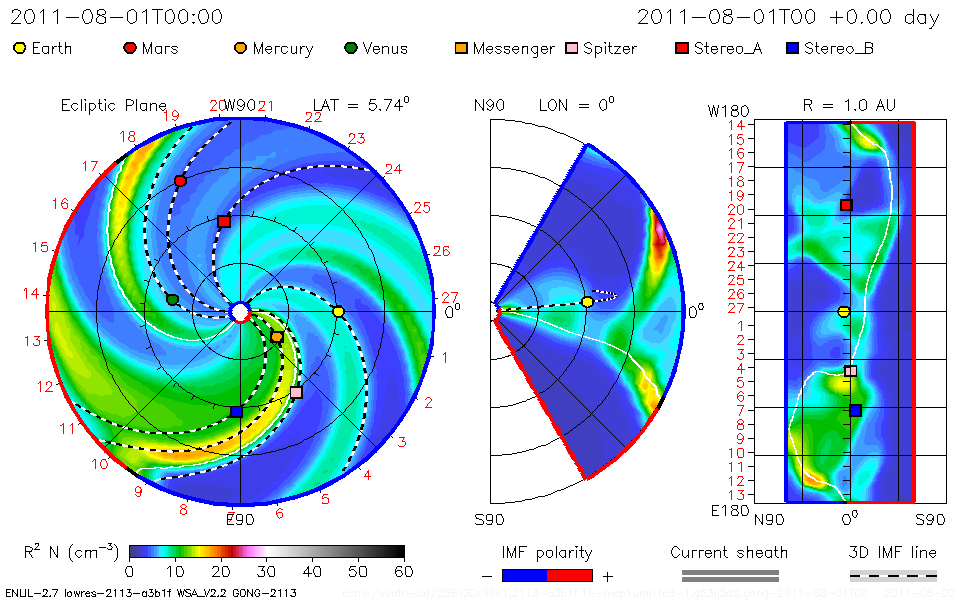I Filed this under Saturday Lecture Series
From today’s http://www.spaceweather.com/:
M6-CLASS SOLAR FLARE: Sunspot 1261 unleashed another strong solar flare this morning–an M6-class flash at 1348 UT. Like yesterday’s eruption from the same active region, this explosion propelled a CME in the general direction of Earth. ETA: August 6th. Stay tuned for additional analysis..
INCOMING CLOUD: Yesterday’s M1-class eruption from sunspot 1261 was observed by three spacecraft: SOHO, STEREO-A and STEREO-B. Using data from those three points of view, analysts at the GSFC Space Weather Lab have made a 3-dimensional model of the CME now en route to Earth. Click on the image to launch a computer-generated movie of the expanding cloud:
Yes, i know the animation goes into the text on the right…Anyway. Below is the Animation from GSFC Space Weather Lab.:
According to their work, the CME left the sun traveling 900 km/s and should reach Earth (denoted by a yellow dot in the simulation) on August 5th at 0300 UT plus or minus 7 hours. Another cloud produced by today’s M-flare may be right behind it; stay tuned for movies of that one, too. Mild to moderate geomagnetic storms are possible when these CMEs arrive on August 5th and 6th. Aurora alerts: text, voice.

Predicted Aurora Activity:
Updated at: 2011 Aug 02 2200 UTC
Mid-latitudes
|
0-24 hr
|
24-48 hr
|
|
|
ACTIVE
|
05 %
|
40 %
|
|
MINOR
|
01 %
|
15 %
|
|
SEVERE
|
01 %
|
05 %
|
High latitudes
|
0-24 hr
|
24-48 hr
|
|
|
ACTIVE
|
05 %
|
40 %
|
|
MINOR
|
01 %
|
15 %
|
|
SEVERE
|
01 %
|
05 %
|
Right now, the kP Index is at 1, that’s low. Keep an eye on this page, if the number goes over 4-5 then there should be visible activity for some of us.
This is the current Statistical Auroral Oval, it updates as new info is added






